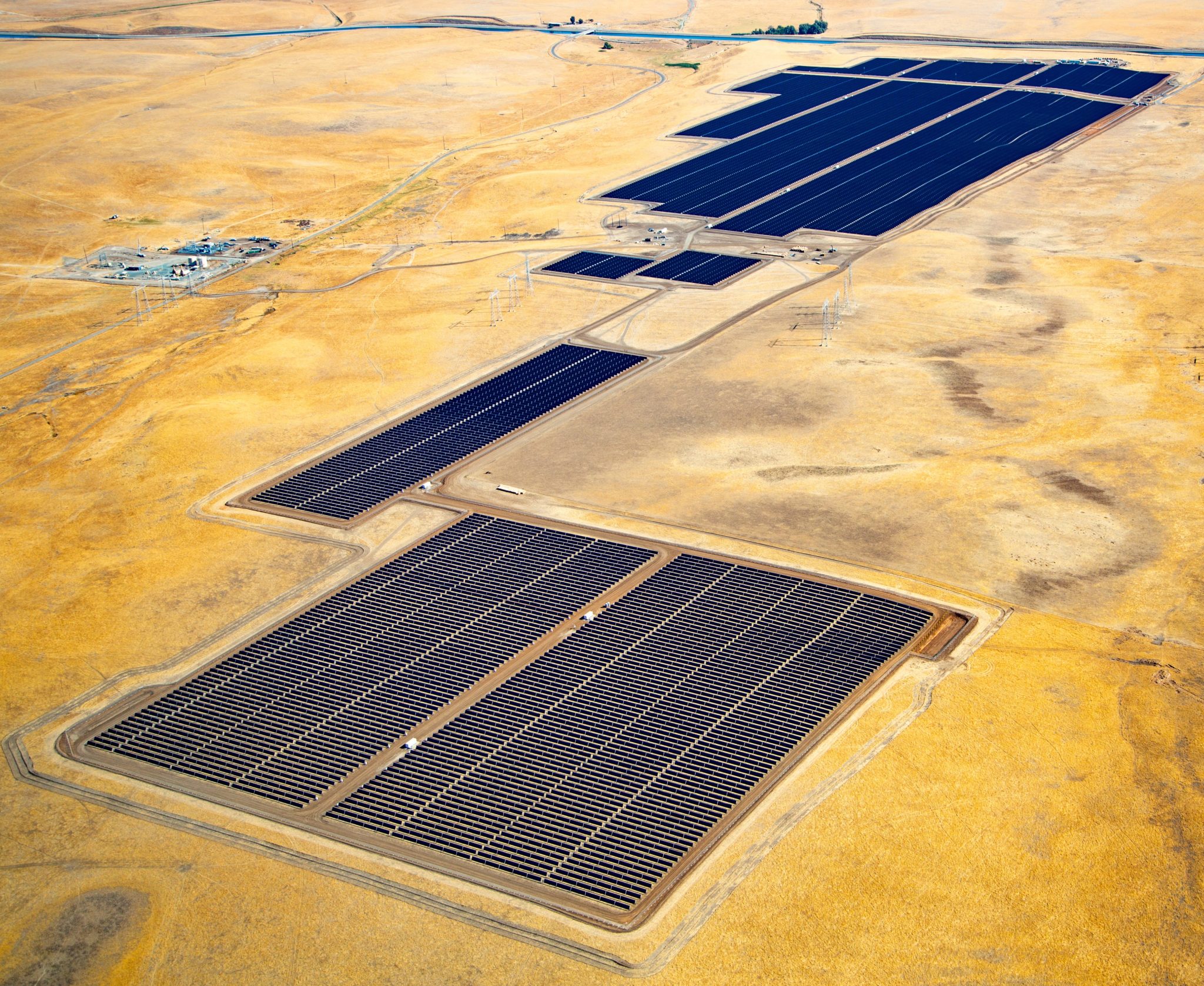
Utility-scale solar energy systems are large commercial solar installations designed to support the electric grid as well as the host’s own facilities. As installation costs grow more affordable, more eyes are turning to utility-scale projects as potential solutions for renewable energy goals. Our FAQ is an excellent place to begin if you are interested in hosting a utility-scale solar energy system.
1. What is Utility-Scale Solar?
Solar installations can come in a wide variety of sizes and designs, but “utility-scale” solar refers to an installation built to deliver a significant amount of power to the electric grid (as opposed to a smaller installation that only provides power for one facility).
There is no specific size when a solar installation is utility grade, but these installations are generally commercial and large enough to produce enough energy to have an impact on the region’s electric needs. Particularly large installations may rate 50 megawatts, although installations all the way to down to just several megawatts can be considered utility-scale (some organizations put a specific limit, like 10 megawatts, on the term, but this varies). It’s best to think of utility-grade solar projects as designed to support the electric grid itself instead of a particular building or organization – which usually means they must be planned and built for that purpose.
2. How Does Utility-Scale Solar Work?
A utility-scale installation is connected directly to the electric grid. When the installation generates electricity, that energy is carefully modulated and fed into the grid to meet current electrical demands for the region.
While energy production from a solar installation can vary, utility solar production is not exactly random. Utility-scale solar is also defined by PPAs, or Power Purchase Agreements. In a PPA a developer helps to design and installation a solar energy system on a specific property: The developer manages this installation and sells electricity to the host at an agreed-upon price, typically a favorable rate compared to current market rates. Any excess electricity is fed back into the electric grid and generates energy credits for the host that can be sold or otherwise used to meet renewable energy goals.
Solar Power Purchase Agreements typically last 10 to 20 years, and terms will be in place until the agreement ends. Some plans have variable rates that may increase over time, while others have fixed rates that stay the same for the duration of the agreement. After this period, the host may have options to purchase the solar system entirely for its own use, or have it removed. Since developers largely handle the initial costs of the installation, a PPA can be an affordable method for a host to adopt solar energy.
3. How Much Does Utility-Scale Solar Cost?
The total cost for a utility-scale installation can vary depending on its size. As we mentioned, with a PPA agreement, many of the initial costs are handled by the developer, not the host, so there are also ways to mitigate any installation expenses. Additionally, the costs of building and managing solar systems are steadily decreasing – they have fallen by 82% in the last decade alone, which means that utility-grade solar is a viable option for a growing number of clients.
All that considered, these days utility-scale solar installation costs can be as low as 70 cents per watt. If you have any questions about the costs for a potential solar project, Coldwell Solar can offer consultation and collaboration to help you drill down to concrete numbers based on your specific needs, as well as finding the right solar energy financing options.
4. What is Utility-Scale Energy Storage?
Utility-scale installations can produce significant amounts of energy, and it’s important that energy doesn’t go to waste if it is created during times when demands on the electric grid are low. This is why many utility-scale systems use storage solutions to house unneeded electricity that can be fed back into the grid at later times, typically during peak demand hours.
These storage systems are typically made with an array of powerful batteries, such as lithium-ion or lead-acid models.
5. What is the Difference Between Utility-Scale Solar and Distributed Generation Solar?
Distributed generation solar energy typically refers to smaller installations working together to provide power to specific end users, such as businesses and homeowners. Utility-scale solar energy focuses on generating larger amounts of electricity that can be sold to wholesale buyers.
6. Which U.S. State Generates the Most Utility-Scale Solar?
California, and it isn’t even close…at least not yet. California’s long-term solar energy investments have led to the state around a third of the United States’ total solar electricity, and California annually leads the rest of the states in new utility-scale solar installation by a wide margin. However, other states have increased their investment and interest in solar installations, especially in the South Atlantic region. Texas and Florida, for example, have been increasing their large-scale solar projects in recent years.
Again, if you have any questions about utility-scale installations, associated costs, or how to work with a solar energy company in California, contact Coldwell Solar to learn more.

